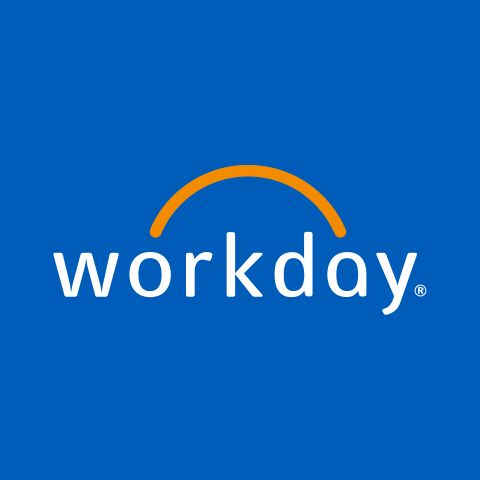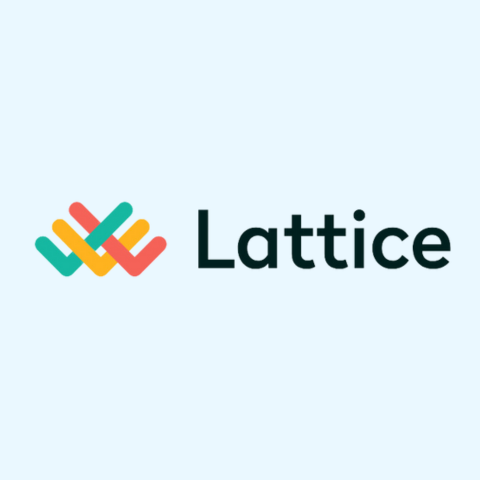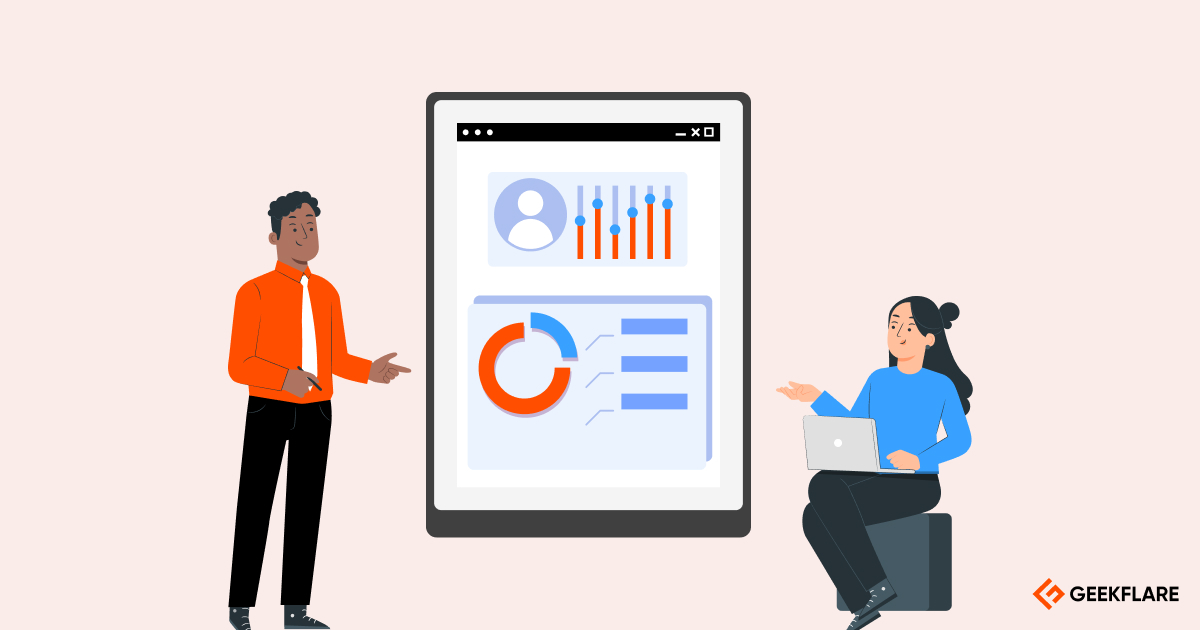Employee feedback software helps boost employee engagement, improve performance, and reduce turnover. It’s all about creating a space where feedback flows both ways, making your workplace more transparent, productive, and, let’s face it, a much better place to work.
The employee feedback software market is growing, and it’s no surprise why. Feedback has become a non-negotiable for building thriving workplaces. According to AllVoices[1], 41% of employees have left a job because they didn’t feel listened to, and 37% quit because their feedback wasn’t taken seriously.
Zippia[2] adds that 65% of employees want more feedback, and organizations prioritizing it see 14.9% lower turnover rates. So, employee feedback software isn’t just a nice-to-have: It’s critical for building stronger teams.
To help you choose the right software, I have analyzed 16 options and selected the 10 best employee feedback software, considering features such as reporting and analytics, integration, security, and more.
- 1. Engagedly – All-in-one Talent Management Platform
- 2. 15Five – Best for Continuous Feedback and Growth
- 3. Reflektive – Best for Employee Engagement, Productivity and Retention
- 4. Officevibe by Workleap – Best for HR Leaders and Managers
- 5. Culture Amp – Best to Build High Performing Teams
- 6. Workday Employee Voice – Employee Feedback Tool for Enterprise
- 7. ContactMonkey – Feedback Through Email Surveys
- 8. Lattice – Best People Management Platform
- 9. Leapsome – Best for OKR and Goal Management
- 10. Qualtrics – Best for Advanced Analytics
- Show less
Best Employee Feedback Software Comparison
I summarized employee feedback software by its key features, AI capabilities, integrations, and starting price and gave an overall rating for each software.
 |  |  |  |  |  |  |  |  |  | |
Gamification and Badges, Reward Storefront, Praise wall | Engagement Surveys, Performance Reviews, OKRs & Goal Management | Real-time feedback, 360 reviews, goal management, and real-time morale | Anonymous feedback & messaging, Powerful custom surveys, DEIB survey report | Engagement survey, Goal tracking, People analytics, AI-powered analytics | Employee engagement, Employee retention, AI insights, Leadership development | Pulse surveys, Custom polls, Employee net promoter score (eNPS) | Goal setting, Real-time feedback, analytics, 1:1s | Anonymous feedback, peer review, Praise wall | Employee pulse, 360 development, Predictive analytics | |
25 | 30+ | 10+ | 40+ | 40+ | REST APIs, Communication | 20+ | 25+ | 50+ | 90 | |
$2 | $4 | Custom | $12 | Custom | Custom | Custom | $11 | Custom | Custom | |
Geekflare’s editorial team determines ratings based on factors such as key features, ease of use, pricing, and customer support to help you choose the right business software. | ||||||||||
Employee Feedback Software Reviews
Below, I’ve reviewed each software in detail, highlighting why you should use it, its pros, cons, integrations, and top features.

1. Engagedly
All-in-one Talent Management Platform
- IntegrationHRIS, SSO, Onboarding
- Customer SupportEmail, Phone, Live Chat Knowledge base
Why Engagedly
As a talent management platform, Engagedly helps thousands of global companies to drive employee engagement, boost performance, and unlock potential through meaningful development.
From growing startups to established enterprises, Engagedly’s platform supports businesses in creating thriving workplaces where employees feel valued and supported. I like its goals feature, which consists of milestones that align with your team’s goals.
What sets this specifically apart is its integration of AI-powered insights and intuitive workflows that simplify everything from performance management to career growth.
Engagedly Pricing
Engagedly offers a user-per-month pricing model, which is listed below:
-Recognize & Reward: $2/user/month (Includes Gamification and Badges, Reward Storefront, Praise wall, etc.)
-Learn & Grow: $4/user/month (Includes Learning Experience Platform, Skill Library, 360° Feedback or Multirater Assessment, etc.)
–Manage Performance: $8/user/month (Includes Performance Reviews, Goals and OKRs, Meetings, Real-time Feedback, etc.)
Engagedly Features
Feedback flows continuously, which means small wins get celebrated, and issues don’t pile up.
Makes recognition fun with badges, points, and shout-outs.
You can use prebuilt templates that make surveying easy.
Keeps evaluations transparent and structured, helping employees know where they stand.
Celebrates wins where everyone can see and join in.
Includes tailored courses that help your team grow without wasting time on irrelevant content.
Encourage team members to take charge of their progress.
Give and receive feedback immediately, making team growth feel dynamic and continuous.
Engagedly Pros/Cons
Company regularly updates the platform, adding new and advanced features that benefit your company.
Helps identify and develop future leaders within your organization.
Integrates with tools like Slack and Microsoft Teams, streamlining workflows.
Features like badges and points make the platform engaging and fun.
No free trial is available.
Configuring permissions for different user roles can be time-consuming.
Occasional updates can cause brief disruptions in service.
User experience challenges when exporting data for analysis.

2. 15Five
Best for Continuous Feedback and Growth
- IntegrationHRIS, Productivity, Security
- Customer SupportEmail
Why 15Five
15Five allows performance reviews to be more easy and meaningful. It focuses on honest conversations, fair assessments, and personalized growth plans, turning a traditionally dreaded process into something teams can look forward to.
It’s a great platform for building a supportive, high-performing culture where people feel important within any organization. It allows employees to set career goals while managers provide tailored coaching through continuous performance updates.
15Five Pricing
15Five offers you the option to book a demo before finalizing the pricing plan for your team. It has three pricing plans, which are as follows:
-Engage: $4/user/month (Includes Engagement Surveys, Predictive Impact Model, Analytics)
-Perform: $10/user/month (Includes Performance Reviews, OKRs & Goal Management, Core Platform)
-Total Platform: $16/user/month (Includes 15Five AI, HR Outcomes Dashboard, Manager Effectiveness Indicator, Security, etc.)
15Five Features
Keeps track of employee performance across multiple teams and departments with structured review cycles.
Uses real-time insights to see how well managers support their teams and where they can improve.
Creates, tracks, and adjusts OKRs to match organizational priorities, helping every single one of your teams to contribute to the bigger picture.
Defines clear roles and responsibilities, ensuring every team member knows what’s expected of them.
Uses ongoing check-ins and personalized recognition to boost team morale and productivity.
Identifies future leaders with built-in promotion and readiness indicators linked to real performance data.
15Five Pros/Cons
Speeds up onboarding by automating initial performance reviews and development planning.
Conducts pay reviews linked to individual and team achievements with full transparency.
Measures how leadership training impacts overall team performance and employee satisfaction.
Stays audit-ready with compliance tracking tools that meet industry standards and regulatory requirements.
Make smarter business decisions with in-depth analytics highlighting what’s working and what needs improvement.
AI-synthesized feedback insights are available only in higher plans.
Requires internet connectivity to access most features.
Advanced analytics may need expert interpretation.
Custom reports can take time to configure properly.

3. Reflektive
Best for Employee Engagement, Productivity and Retention
- IntegrationHRIS, Collaboration, SSO
- Customer SupportEmail
Why Reflektive
Forget outdated annual reviews and hollow “great job!” messages. Reflektive’s approach is all about creating a culture where feedback is frequent, goals actually matter, and recognition feels genuine. They call it the “third way”, which is a system that blends accountability, coaching, and real-time feedback to keep everyone improving every day.
Reflektive’s analytics dive deep into team performance, providing actionable insights that help businesses make smarter decisions. With features like engagement surveys, strengths discovery, and integrated coaching, they ensure performance management is as strategic as it is supportive.
Reflektive Features
Links employee performance to promotion readiness indicators, simplifying your promotion cycles and succession planning.
Tracks long-term engagement trends and highlights areas that need attention through reports.
Keeps organizations audit-ready with built-in compliance tracking and historical performance records.
Ensures company alignment through goal-tracking tools that link individual performance to broader business outcomes.
Launches custom or pre-built engagement surveys on a set schedule, gathering employee sentiment efficiently and consistently for your reports.
Integrates with HRIS systems, email platforms, and collaboration tools like Slack and Microsoft Teams for uninterrupted workflows.
Offers pre-built dashboards and customized reports that make sense of complex people data, enabling smarter, best-thought decisions.
Reflektive Pros/Cons
Highlights your managers’ performance with insights that help improve coaching and leadership skills.
Uses predictive analytics and benchmarks to spot retention risks early, helping companies retain top talent.
You can instantly spot your team’s feelings using engagement surveys and sentiment analysis.
Offers public shoutouts and recognition walls let you celebrate wins meaningfully, not mechanically.
Feedback templates are not customizable enough to meet diverse organizational needs.
Users have reported difficulties when migrating data from other systems into Reflektive.
Absence of integration with LMS platforms can hinder comprehensive employee development tracking.
Some users stated that the frequency of notifications is overwhelming, which can lead to potential alert fatigue.

4. Officevibe by Workleap
Best for HR Leaders and Managers
- IntegrationHRIS
- Customer SupportHelp Center
Why Officevibe
With over 20,000 organizations relying on Workleap Officevibe, including household names like Siemens, Ikea, and Dyson, the platform has earned trust by delivering insights that fuel better work environments.
The platform helps HR leaders and managers with regular feedback and actionable insights. Its tools range from customizable pulse surveys to anonymous feedback channels. I like how it helps make understanding team sentiment straightforward and data-driven. You’re not just guessing how employees feel; you know.
Officevibe Features
Monitor engagement trends in real-time.
Anonymous feedback channels encourage employees to share their thoughts openly.
Review cycles are seamless. Managers can track progress without the usual admin hassle.
Syncs easily with major HR systems, so data flows without interruptions.
Feedback, engagement, and recognition data are all in one place, simplifying decision-making.
Real-time messaging keeps the conversation flowing, helping teams stay connected.
Officevibe Pros/Cons
Easy to set up pulse surveys and track team morale using eNPS® scores.
Recognition is easy to track, helping you build a culture where great work never goes unnoticed.
Users have reported that the support team is responsive and helpful, ensuring a smooth user experience.
Option for anonymous feedback encourages openness and honesty among employees.
Regular updates and new features demonstrate the company’s commitment to enhancing the platform.
Lacks robust filtering options for feedback, making it difficult to analyze specific topics or sentiments.
Method for calculating eNPS has been questioned, as it disregards certain ratings, potentially skewing results.
Users have noted that controlling the frequency of surveys can be challenging, potentially leading to survey fatigue.
Some users feel that the cost is high, especially for small businesses, making it less accessible.

5. Culture Amp
Best to Build High Performing Teams
- IntegrationHR, Communication
- Customer SupportEmail
Why Culture Amp
Backed by data from over 13 million responses across 6,500+ customers, I love that Culture Amp combines employee engagement, performance management, and development into one powerful system.
The platform is all about understanding what drives people. Its people analytics platform transforms business data into actionable insights, enabling HR teams to grow in the best way possible. From engagement surveys and continuous performance reviews to tailored development plans, every tool is designed to help companies become more human-centered.
Culture Amp Features
Provides well-being surveys that guide companies in building supportive environments.
Predictive analytics make forecasting HR outcomes easier and more accurate.
Offers transparent performance and engagement goals.
Simplifies performance reviews with 360-degree feedback and automatic review scheduling.
Employees can give and receive feedback anytime, cultivating a culture of transparency and improvement.
Spot potential retention risks before they become problems, helping you keep top talent longer.
Managers can easily access performance data and run engagement initiatives, making team leadership simpler and more focused.
Culture Amp Pros/Cons
Navigating dashboards and creating surveys is straightforward with their platform.
Analytics are easy to understand. Users liked how it breaks down complex data into clear, visual insights that help teams make smarter decisions.
Feedback feature lets managers and employees exchange input regularly, building a culture of open communication.
Includes learning modules and personalized development plans.
While the reports are useful, there are not a lot of customization options to tailor the data view according to specific metrics.
Setting confidentiality levels wasn’t as straightforward as many users in G2 expected.
While helpful, the learning module setup process felt complicated, requiring detailed customization to get it right.
Many users disliked having to correct some survey results manually due to data sync delays.

6. Workday Employee Voice
Employee Feedback Tool for Enterprise
- IntegrationCommunication, REST API
- Customer SupportContact Form
Why Workday Employee Voice
Workday Employee Voice uses AI-powered surveys to capture how employees feel in real-time and turn their feedback into action plans that drive engagement, retention, and workplace growth.
Trusted by industry leaders like Aon, Sanofi, and L.L. Bean, this platform blends advanced analytics with a human touch. According to their website, the platform achieved an 80% weekly participation rate among employees, with an overall 95% having provided feedback at least once.
I could not get a demo, but several users online revealed that it helped their businesses respond with empathy, improve team dynamics, and build a culture where every voice shapes the future.
Workday Employee Voice Features
Real-time feedback updates offer the latest insight, not last quarter’s outdated data.
Leaders can see how their actions directly affect engagement scores.
Integrating performance data with feedback reports made talent reviews feel more comprehensive and less biased.
Recommends new development opportunities based on employee interests.
Everyone can see how their work is connected to larger company objectives, boosting a shared sense of purpose.
Compatibility with tools like Slack and Microsoft Teams keeps communication smooth and actionable.
Highlights why employees might leave before they actually do, making retention strategies far more effective.
Workday Employee Voice Pros/Cons
Users value the detailed insights provided, aiding in informed decision-making.
Ensures honest employee feedback process by maintaining respondent confidentiality.
Many users appreciate the intuitive and clean platform, making navigation straightforward even for those new to employee engagement software.
With multi-language capabilities, it accommodates diverse, global workforces.
Allows filtering feedback by team, department, or region, giving more focused insights.
Full potential often requires integration with other Workday products, limiting standalone effectiveness.
During peak periods, customer service response times can slow down, frustrating users.
An active internet connection is mandatory, restricting use in offline environments.

7. ContactMonkey
Feedback Through Email Surveys
- IntegrationHRIS, Compilance, Communication
- Customer SupportHelp Center
Why ContactMonkey
Founded in Toronto, ContactMonkey began as a sales email tracker but quickly found its true calling in reshaping internal communications. Recognizing that engaged employees drive business success, the company built tools that spark honest, productive conversations within organizations.
What I really enjoy about this platform is that with features like emoji reactions, custom polls, and instant feedback options, ContactMonkey makes employee surveys intuitive and enjoyable. By facilitating open communication and encouraging meaningful feedback, ContactMonkey helps teams voice their opinions confidently, driving change and continuous improvement within organizations.
ContactMonkey Features
Managing event invites, reminders, and post-event feedback happen right from your inbox.
eNPS scores give a clear picture of how likely employees are to recommend the company.
Employees can share openly without fear, implementing little by little trust and transparency across the organization.
Offers filter and approve comments, ensuring the feedback you act on is constructive and meaningful.
With pulse surveys and custom polls, you’re always one step ahead on what your team cares about most.
Gather opinions with emoji reactions and star ratings.
ContactMonkey Pros/Cons
Setting up email campaigns, managing contacts, and tracking engagement is straightforward.
Collecting employee feedback through interactive surveys has been a good change for companies trying to improve workplace satisfaction.
Offers instant access to open rates, click-through rates, and engagement data.
Drag-and-drop email builder makes creating polished internal newsletters straightforward, even for non-designers.
Some users expressed a desire for more advanced analytics, like heatmaps or time-spent tracking per email section.
Businesses in different time zones wish for extended customer support availability, especially for urgent issues outside North American business hours.

8. Lattice
Best People Management Platform
- IntegrationHRIS, Communication, Payroll
- Customer SupportHelp Center
Why Lattice
Lattice is built for continuous feedback. They’ve made performance conversations less about paperwork and more about real progress. Managers can move beyond status updates to meaningful conversations that balance career development with day-to-day goals, creating stronger, more engaged teams.
It uses Slack for AI-powered review insights and transforms everyday interactions into meaningful moments of learning and recognition. My favourite aspect about Lattice is that it’s not just software: it’s a mindset that turns managers into mentors and teams into driven, engaged communities ready to achieve their best.
Lattice Features
Sharing praise and feedback couldn’t be easier with the integrations into Slack, Microsoft Teams, and even email.
Employees can request peer or client feedback, providing a 360-degree view of their work.
AI-backed summaries ensure reviews aren’t just opinion-based. They’re backed by real, trackable data that highlights wins and areas for improvement.
Employees can reach across departments to get input from anyone they collaborate with.
Lattice Pros/Cons
Setting, monitoring, and adjusting goals is easier.
Structured meeting templates ensure managers and employees stay on track, focusing on growth, not just tasks.
Clear career mapping tools make growth tangible and motivate employees to invest in their development.
Updates take longer than expected, leaving you stuck with known issues until the next release.
Platform slows down when multiple users are active simultaneously, which can turn frustrating during company-wide reviews.
Global teams might struggle since some language options are missing.

9. Leapsome
Best for OKR and Goal Management
- IntegrationHRIS, SSO, Communication
- Customer SupportEmail
Why Leapsome
Since 2016, Leapsome has been on a mission to transform the everyday grind into meaningful growth through its people enablement platform. Whether it’s performance reviews, goal tracking, or engagement surveys, Leapsome creates tools that help employees shine, and businesses succeed.
I recommend Leapsome because it tracks how often teams exchange feedback and spot engagement trends in real-time. Admins can dive into team feedback reports and identify top contributors without awkward meetings.
Leapsome Features
Feedback flows without friction, helping everyone feel safe sharing thoughts at any time.
Managers can easily reference past reviews and 1:1 notes to guide development talks.
Assign mentors to view private feedback and create personalized growth plans.
With feedback tools in Slack and Teams, collaboration is more natural.
Keeps growth on track by connecting feedback insights to development objectives.
Leapsome Pros/Cons
Tracking goals with Leapsome makes alignment a more straightforward process.
Engagement surveys come with recommendations that make implementing changes feel achievable.
Offers personalized development plans that provide details on improvement areas.
Support team is proactive and genuinely invested in user success, not just solving tickets.
Support is offered in limited number of languages, which may be a barrier for global teams.
If you’re a small startup, the platform might feel like overkill due to its extensive features.
Engagement surveys depend on how many teams participate, which isn’t something the platform can control.

10. Qualtrics
Best for Advanced Analytics
- IntegrationCommunication, HRIS
- Customer SupportSupport Ticket, 24/7 Technical Support
Why Qualtrics
With a global presence spanning 20 offices across 5 continents, Qualtrics has become a trusted partner for managing employee experience for over 18,000 clients. It uses predictive analytics to flag employees likely to quit, helping you intervene before issues escalate.
Qualtrics’ impact speaks for itself: users consistently rate it 4.9 out of 5.0 on G2 and Capterra. Although I couldn’t get a demo, many businesses that lean into its platform have seen profitability climb by 23% and employee well-being soar by 66%. It’s more than just software, and I love that it tracks progress on DEI initiatives and suggests targeted improvements. Also, It helps break down departmental silos by connecting data across teams.
Qualtrics Features
Covers every touchpoint from hire to exit, reducing unwanted attrition by improving key experiences.
Transforms data into clear recommendations tailored to your workforce’s unique needs.
Captures feedback through multiple channels to maintain a continuous pulse on employee sentiment.
Generates instant reports that reveal engagement trends and potential workplace risks.
Helps retain top talent by identifying areas where improvements will have the most impact.
Keeps leaders accountable by linking their team’s experiences to business performance metrics.
Flags potential engagement gaps through real-time trend analysis.
Qualtrics Pros/Cons
Tracks eNPS (Employee Net Promoter Score) to gauge how likely employees are to recommend the company.
Drag-and-drop editor, pre-built templates, and customization options make launching even complex surveys easy.
AI-driven text analysis breaks down open-ended responses, giving you actionable insights into employees’ feelings.
System handled high volumes of responses without crashing, which was a major relief during company-wide initiatives.
Enterprise-level security protocols keep your data safe and compliance-ready, ticking an important box for IT teams.
Regular pulse surveys allow companies to track engagement trends over time.
For smaller teams or companies on a tight budget, it might feel out of reach unless you’re committed to maximizing ROI.
Many features require training, and new users might struggle with the platform’s depth if onboarding isn’t handled carefully.
Integrating Qualtrics with internal systems like HR platforms and CRMs required IT help, according to users.
Without management engagement, the platform’s full potential can’t be realized.
What Is Employee Feedback Software?
Employee feedback software is a digital tool that makes sharing and receiving feedback simple and effective. It creates a space where you and your team can have honest conversations about what’s working and what’s not. Think of it as a continuous feedback loop that keeps everyone on the same page.
From my experience, the best platforms make giving and receiving feedback feel natural, not forced. They help you set up regular check-ins, run engagement surveys, and even automate performance reviews. You don’t have to chase people down for their opinions since the software does the heavy lifting by collecting data and turning it into insights you can actually use.
The employee feedback platform transforms a company’s culture. You go from reactive management to proactive leadership. Instead of waiting for annual reviews, you can address challenges as they arise, making your team feel heard and valued.
3 Elements of Effective Feedback
Giving feedback is one of the most powerful ways to unlock potential, fuel growth, and strengthen team dynamics. But let’s be honest: Delivering feedback isn’t always easy.
Done right, it can motivate and inspire.
Done wrong, it can demoralize and create tension.
So, how do you ensure your feedback hits the mark? It all comes down to being clear, actionable, and focused on growth. Let’s explore these three essential elements that turn feedback from a dreaded task into a great tool for personal and professional development.
1. Be Specific and Clear
General statements like “Good job!” or “You need to improve” don’t provide much value. Feedback should be precise, addressing specific actions, behaviors, or results.
For example, instead of saying, “You need to be better at team communication,” try, “Your weekly project updates keep everyone aligned. You can consider adding more details about timelines and next steps.” Specific feedback removes ambiguity and makes expectations crystal clear.
Clarity also means avoiding jargon or overly technical terms unless necessary. Use straightforward language so the person receiving the feedback understands what you mean without confusion. Also, ensure the feedback highlights observable actions rather than vague character judgments.
2. Make It Actionable
Feedback should inspire action, not leave people wondering what to do next.
Instead of highlighting problems with no solution, suggest clear, practical steps for improvement. For example, instead of “Your presentations need work,” try, “Consider breaking down your slides into bullet points and using visuals to support key data.”
Actionable feedback focuses on what can be done, offering a roadmap rather than just pointing out issues. This approach motivates change and fosters a culture of continuous improvement. Be specific about the desired outcome and provide examples when possible to make the next steps easy to follow.
3. Focus on Goals and Growth
The best feedback aligns with individual or team goals. When feedback connects directly to a person’s career aspirations or project targets, it becomes more meaningful. If someone aims to move into a leadership role, highlight instances where they demonstrated leadership potential and suggest ways to build on those strengths.
Additionally, link feedback to broader business objectives when possible. When employees see how their development contributes to the company’s success, they are more likely to stay engaged and motivated. Setting clear, measurable goals makes progress easier to track and celebrate.
How to Get Anonymous Feedback from Employees
No one wants to be “that person” calling out issues, especially when job security or team dynamics are on the line. That’s why anonymous feedback is great.
It creates a safe space where employees can speak freely, and leaders can learn what’s working (and what’s definitely not). But gathering anonymous feedback isn’t just about throwing out a random survey link and hoping for the best. It’s about building a thoughtful system that invites honesty, handles input with care, and drives meaningful change. Here’s how to get it right.
1. Choose Tools Designed for Real Conversations
The right platform makes all the difference. Tools like Leapsome, Qualtrics, and Workday are built specifically for gathering feedback anonymously while keeping everything organized and actionable. They allow employees to share their thoughts without hesitation, knowing their identity is protected. These platforms are like digital confessionals but for workplace improvement.
2. Make Feedback an Ongoing Habit
Consistency is key. Platforms like Lattice and ContactMonkey excel at setting up recurring pulse surveys that keep the feedback loop alive. Short, focused check-ins every month or quarter make giving feedback as routine as grabbing your morning coffee. It’s low-pressure but really high-impact.
3. Keep It Casual with Anonymous Comment Boxes
Not every thought fits neatly into a survey question. Sometimes, employees need a place to vent or share wild ideas out of the box. This is where tools like Officevibe and Culture Amp can really shine. Their “always on” feedback options let employees submit ideas, concerns, or even random thoughts without waiting for the next survey cycle. Think of it as a simple, secure, and open virtual suggestion box.
4. Add 360-degree Reviews for Honest Evaluations
Peer reviews can feel awkward when faces are attached to comments, but anonymity takes the edge off. For example, Leapsome’s 360-degree review tool allows coworkers to give constructive feedback without the fear of social awkwardness. You’ll get genuine input that’s focused on development, not drama.
5. Be Loud and Clear About Anonymity
Transparency isn’t just a meaningless word. It’s essential when asking for honest feedback. Make sure your team knows exactly how anonymity is maintained. Explain what data you collect, how it’s stored, and how it will be used. When employees trust their names aren’t attached to their comments, participation rates skyrocket.
References
View Details
What’s next?
After you manage the employee experience, let’s see some guides to evaluate your employee’s performance and recognition.
-
 EditorRashmi Sharma is an editor at Geekflare. She is passionate about researching business resources and has an interest in data analysis.
EditorRashmi Sharma is an editor at Geekflare. She is passionate about researching business resources and has an interest in data analysis.





